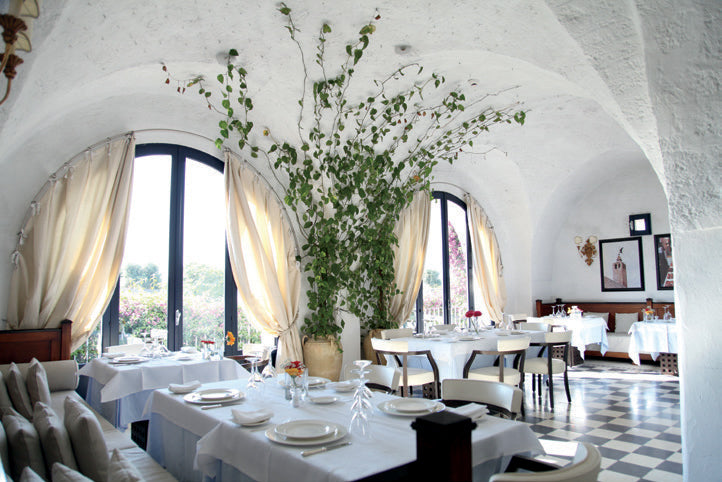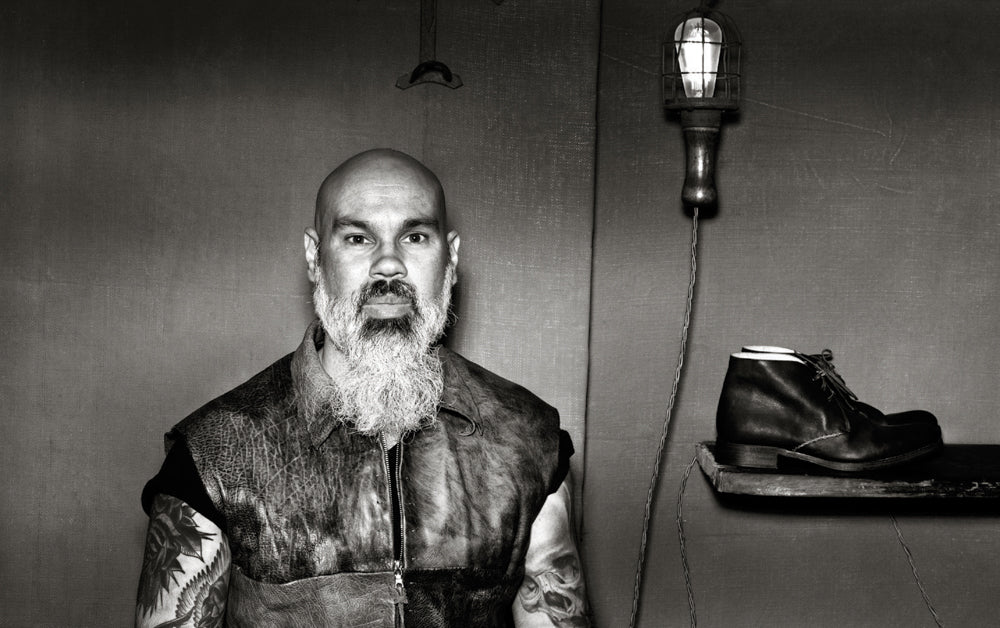
Passport: Puglia
PASSPORT: PUGLIA

Located on the spiked heel of Italy, this still largely untouristed region offers arcadian landscapes, artisanal food and wine, and a blissful atmosphere of calm and contentment. Alan Maleh soaks up the sun and serenity.
First impressions can be deceiving. The weekend my wife and I arrived at our hotel near the coastal town of Savelletri di Fasano, there was a Nikki Beach party in full swing. It could have been Ibiza or St. Tropez — what we’d come to Puglia to escape from. But the party was an exception, and the rest of our weeklong vacation in this southeast region of Italy was marked by the idyllic sense of tranquillity and slowed-down time that we had hoped to find.
Sandwiched between two cobalt blue seas — the Adriatic and the Ionian — Puglia is a spur of gently rolling land punctuated by vineyards and silvery-green olive groves. Many of the olive trees are centuries old, so magnificently gnarled by time that they are like venerable sages or great-great-grandparents you feel you could talk to and get advice from. The painstaking way the farmers tend and manicure these ancient trees is emblematic of the relaxed lifestyle in Puglia, where there’s no rush and always enough time to take care of the details.
It’s the accumulation of small details — and the absence of dazzling tourist attractions — that makes Puglia a place of subtle enchantment. Although there are some fine Baroque churches in the honey-colored city of Lecce, most of the region’s architecture is modest and human-scaled. A lot of it features the rough gray limestone that peppers the countryside; the locals stack it without mortar to make meandering stone fences as well as trulli — white-washed cottages with cone-shaped roofs, some dating back to the 14th century — which are seen everywhere. In fact, the whole town of Alberobello, a Unesco World Heritage site and one of Puglia’s few shots at mass tourism, is made up of some 1,400 densely clustered trulli.
The warm, dry weather and expanses of flat terrain make Puglia a cyclist’s paradise, a big plus for me. Our hotel rented us bicycles — I bike at home and had even brought my own clips — and provided an “instructor” who took us on private day trips to local villages and beaches. We’d often stop to taste the local produce — fruity red wines, fresh artisanal cheeses, hearty salumi, fragrant olive oil — and no matter the establishment, the greeting was always warm and hospitable, even by Italian standards.
The welcome at our hotel, Masseria Torre Maizza, an impeccable five-star boutique property in a converted 15th-century farmhouse, was equally cordial; as we got to know our host, we began to feel like guests in his rustic-chic house. There are similar charming small hotels dotted around, but a recent addition to the high-end roster is different: The Borgo Egnazia — a 40-acre resort with 28 three-bedroom villas, 22 two-story townhouses, and 63 regular rooms — is enormous by Puglian standards and has a hard-edged glamour that seems at odds with the region’s quiet soul. Could that simple essence be changing?
Masseria Torre Maizza



In Puglia, a masseria is a fortified coastal farm- house dating from the Middle Ages, built to withstand Saracen and other invaders. Over the last decade, many of them have been converted into small luxury hotels. We stayed in one of the very best, Masseria Torre Maizza, a 26-room gem set on an estate near the fishing town of Savelletri. A newly constructed wing of interconnected cottages and courtyards has been blended seamlessly with the 500-year-old masseria to create a little whitewashed village with its own golf course surrounded by ancient olive groves.
Designed by owner Vittorio Muolo, the hotel’s urbane interiors are so elegantly understated that they fit right in with the farm’s clean-lined original features and simple rural setting. There’s a large colonnaded swimming pool to lounge by, a small spa to be pampered in, and a lantern-lit roof terrace on the watchtower to view the Adriatic. For the more active guests, there are cooking lessons, golf, and bicycle rides to the hotel’s beach club 15 minutes away.
Seventy percent of the food served in Torre Maizza’s vaulted restaurant is grown in the hotel’s organic garden and orchard — beans, chicory, zucchini, sweet peppers, oranges, wild herbs, and sweet cherries. In true Puglian style, the dishes are unfussy with an emphasis on fresh, locally sourced ingredients — red tuna with capers, lamb loin in almond crust, cheeses with honey, and pears marinated in red wine. It’s la dolce vita with a homespun face.
Caseificio Lamapecora



Puglia produces dozens of varieties of cheese, ranging from the hard and mature to the soft and spreadable, some of them unique to the region. The delicious fresh cheese burrata, a ball-shaped mozzarella shell with a buttery mozzarella and cream filling, was invented in Puglia back in the early 20th century. Meant to be consumed within 24 hours of being made — it’s considered over-the-hill after a couple of days — it was memorably tangy and rich when we tried it straight from the cooling vats at Caseificio Lamapecora, a family-owned dairy farm and artisanal cheesemaker near Savelletri.
Overseen by the no-nonsense matriarch in snow-white work boots, the small establishment produces a whole range of cheeses, including ricotta forte, caciocavallo, fior di latte, and, of course, mozzarella. All stages in the production process are performed by hand, with workers plunging timeworn wooden paddles into large metal vats of hot curdling milk to separate the solid curds from the milky whey. We watched the son, a dairy-factory wizard, his arms red from immersion in hot liquid, kneading the fresh cheese into shape before stretching it and deftly tying it into neat little mozzarella knots.
Before leaving, we were offered a tempting spread of various cheeses, accompanied by frisella and tarallo breads and inky red wine. In the barn, bunches of sun-dried tomatoes hung from the rafters, ready for pasta sauce, while outside, cows sought the shade of olive trees, which are a ubiquitous presence even on a dairy farm.
Savelletri di Fasano


The small fishing village of Savelletri di Fasano, a short bike ride from the Torre Maizza, is quaint and charming rather than dazzling, though it does offer a spellbinding, close-up view of the Adriatic. Yet an undeniable buzz is building about this pleasant little harbor town with a resident population of around 700, and not just because there are five first-rate hotels in the immediate neighborhood.
Savelletri’s own enticements include Pescheria 2 Mari, a glass-box restaurant in the tiny waterfront Piazza Amati, with a menu of nothing but ocean-fresh raw fish and crustacea. Sitting at an alfresco table over- looking colorful fishing boats, we feasted on carpaccio di pesce, comprising paper-thin slivers of white bream, swordfish, and tuna with scampi and prawns. Served with frisella bread, lemon slices, and olive oil, the heap ing platter of seafood needed no other accompaniment than a glass of ice-cold prosecco.
Savelletri is also the site of Torre Maizza’s sister property, Masseria Torre Coccaro, which boasts a splendid private beach club that’s open to guests of both hotels. If you tire of lazing under the Polynesian- style gazebos on the sandy shore, there’s a private motor yacht to take you to the sea caves in the limestone cliffs at Polignano a Mare, to the delightful old fishing port of Monopoli, or to swim and scuba dive in quiet coves nearby.
Masseria San Domenico


Also close to Savelletri, Masseria San Domenico is one of the older converted farm- house hotels, and one of the most beautiful. The building dates back to the 15th century, when it was used by the Knights of Malta as a watchtower. The 50-room property offers exemplary facilities: a stunning free-form swimming pool, a state-of-the-art thalasso-therapy spa, two tennis courts, a well-equipped gym, a private beach, and an 18-hole golf course. It’s all very low-key and discrete, achieving an almost elysian level of serenity and privacy. This, you feel, is the perfect luxury retreat for anyone famous who wants to stay under the radar.
But we were drawn to the San Domenico for a different reason. Puglia produces more olive oil than any other region in Italy. Most of it, though, ends up as mass-produced oil rather than as the estate-bottled, high-quality kind. There are some extraordinary artisanal Puglian olive oils, and the San Domenico brand, made from olives grown on the hotel’s grounds, is one of them. In fact, olive oil has been produced here since the 18th century, and the hotel’s vaulted dining room is the former olive press, which dates to that time.
The extra-virgin oil is light and fruity — typical of the best from the area — with a pure golden color; the canister, which echoes the rusty hue of the iron-rich Puglian soil, looks just as attractive as its content. Some of the hotel’s toiletries are also made with the estate oil, and as an ultimate indulgence, the spa uses it in their signature olive oil aromatherapy massage.


